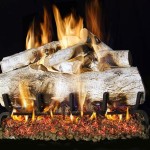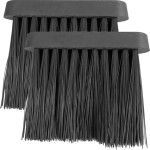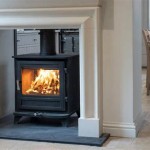Here is an article on outdoor clay chimineas:
Outdoor Fireplace: Exploring the Allure of Clay Chimineas
Clay chimineas have emerged as a popular choice for outdoor heating and aesthetic enhancement in gardens, patios, and decks. These distinctive, vase-shaped structures, originating from centuries-old Mesoamerican traditions, offer a unique blend of functionality and visual appeal. Understanding the properties, benefits, and maintenance requirements of clay chimineas is crucial for prospective buyers to make informed decisions and ensure their long-term enjoyment.
Traditionally, chimineas were used for cooking and heating, serving as a central feature in homes. Modern clay chimineas retain their historical charm while incorporating contemporary design elements and manufacturing techniques. The construction materials, typically a type of natural clay, lend themselves to excellent heat retention, allowing for efficient and prolonged burning with less fuel consumption compared to open fire pits.
The design of a chiminea, characterized by its bulbous body and tall, slender chimney, contributes to its efficient burning. The chimney facilitates the upward draft of smoke, directing it away from the surrounding area, thereby minimizing smoke inhalation and improving overall user experience. Furthermore, the enclosed fire chamber reduces the risk of sparks and embers escaping, enhancing safety.
Key Point 1: Material Properties and Heat Efficiency
The primary material used in the creation of a clay chiminea dictates its performance and longevity. Terracotta clay, a common choice, possesses inherent insulating properties. This allows the chiminea to absorb and radiate heat effectively, creating a warm and welcoming ambiance. The thickness of the clay walls also plays a crucial role in heat retention. Thicker walls generally translate to better insulation and a more consistent heat output.
However, the very nature of clay also presents potential challenges. Clay is porous and susceptible to damage from thermal shock, a phenomenon that occurs when the material experiences rapid temperature changes. This can lead to cracking, especially during the initial firing process or when exposed to sudden temperature fluctuations. To mitigate this risk, it is highly recommended to cure the chiminea properly before its first use. This involves a gradual and controlled heating process that allows the clay to adjust to the heat stresses gradually.
Furthermore, sealing the clay with a protective coating can enhance its resistance to moisture and temperature extremes. This sealant forms a barrier, preventing water from penetrating the clay, which can expand during freezing temperatures, leading to cracks and structural damage. Regular application of sealant is recommended to maintain the integrity of the chiminea over time.
The efficiency of heat radiation from a clay chiminea depends not only on the properties of the clay but also on the design of the fire chamber and the chimney. The shape and size of the fire chamber affect the combustion process and the distribution of heat. A well-designed fire chamber promotes efficient airflow, ensuring complete combustion of the fuel and minimizing smoke production. Similarly, the height and diameter of the chimney influence the draft, affecting the intensity of the fire and the direction of smoke flow.
The type of wood used as fuel also impacts the heat output and efficiency of the chiminea. Hardwoods, such as oak and maple, burn longer and produce more heat than softwoods, such as pine and fir. Seasoning the wood properly, allowing it to dry for at least six months, is essential for efficient burning. Dry wood ignites more easily and produces less smoke than green wood.
Key Point 2: Design Aesthetics and Customization Options
Beyond their functional aspects, clay chimineas serve as decorative elements that can enhance the visual appeal of outdoor spaces. Available in a wide array of shapes, sizes, and finishes, they offer ample opportunities for customization to suit individual preferences and design schemes. From traditional southwestern styles to modern minimalist designs, clay chimineas can complement a variety of architectural styles and landscaping themes.
The surface of a clay chiminea can be adorned with intricate patterns, hand-painted designs, or textured finishes. These embellishments add character and visual interest, transforming the chiminea into a focal point in the outdoor setting. The use of decorative tiles, mosaics, or metal accents can further enhance its aesthetic appeal, creating a unique and personalized touch.
The color of the clay itself can vary depending on the source and composition of the material. Natural clay tones range from earthy browns and reds to subtle oranges and yellows. These natural hues can be further enhanced with stains or dyes to achieve specific color effects. The choice of color can significantly impact the overall ambiance of the outdoor space, influencing the mood and atmosphere.
The size of the chiminea is another important consideration, dependent on the size of the outdoor area and the desired heat output. Smaller chimineas are ideal for compact patios or balconies, while larger models are more suitable for spacious gardens or decks. It is important to choose a size that is proportionate to the surrounding space and that provides adequate heat without overwhelming the area.
Furthermore, many clay chimineas are available with various accessories, such as rain lids, stands, and grill inserts. Rain lids protect the chiminea from moisture, preventing water from entering the fire chamber and causing damage. Stands elevate the chiminea, improving airflow and preventing heat from damaging the underlying surface. Grill inserts transform the chiminea into a functional outdoor cooker, allowing for grilling and barbecuing.
Key Point 3: Maintenance and Safety Considerations
Proper maintenance is essential for extending the lifespan and ensuring the safe operation of a clay chiminea. Regular cleaning, proper fuel management, and adherence to safety guidelines are crucial for preventing damage and minimizing potential hazards.
Cleaning the chiminea regularly involves removing ashes and debris from the fire chamber. Accumulated ash can impede airflow and reduce the efficiency of combustion. Using a shovel or ash rake, the ash can be removed and disposed of properly. It is important to allow the chiminea to cool completely before cleaning to avoid burns.
The type of fuel used in the chiminea also impacts its maintenance requirements. Burning seasoned hardwoods is preferable to burning green wood, as dry wood produces less smoke and creosote. Creosote is a flammable substance that can accumulate in the chimney, increasing the risk of chimney fires. Regular inspection and cleaning of the chimney are necessary to remove creosote buildup.
Safety is paramount when operating a clay chiminea. Positioning the chiminea on a non-flammable surface, such as concrete, stone, or brick, is essential for preventing fires. Maintaining a safe distance between the chiminea and combustible materials, such as fences, trees, and furniture, is also crucial. It is recommended to have a fire extinguisher or a bucket of water nearby in case of emergencies.
Never leave a burning chiminea unattended. Constant supervision is necessary to monitor the fire and ensure that it is contained. Keep children and pets away from the chiminea to prevent accidental burns. Avoid using flammable liquids, such as gasoline or kerosene, to start the fire, as these can create dangerous flare-ups.
Protecting the chiminea from the elements is also important for its long-term durability. Covering the chiminea with a waterproof cover when not in use can prevent moisture from penetrating the clay and causing damage. During freezing temperatures, it is recommended to store the chiminea indoors or in a sheltered location to prevent cracking from freeze-thaw cycles.
By understanding the material properties, design aesthetics, and maintenance requirements of clay chimineas, owners can maximize their enjoyment and ensure the safe and efficient operation of these unique outdoor fireplaces. The warmth and ambiance of a clay chiminea can transform any outdoor space into a welcoming and inviting retreat.

Owning A Clay Chiminea They Any Good

Chiminea Clay Outdoor Fireplace Fire Pit Decor Option

What Is A Mexican Chimenea The Pottery Patch

Jumbo Natural Terracotta Clay Chimenea Fire Pit Outdoor Fireplace Designs

Gray Outdoor Clay Chiminea Fireplace Stoney Scribbled Design Charcoal Burning Fire Pit With Sy Metal Stand Com

Beige Outdoor Clay Chiminea Barbecue Firepit Accent Design Charcoal Burning Fire Pit With Sy Metal Stand Com

8 Best Chiminea Fire Pits For Your Backyard Clay Steel And More

Mexican Clay Chiminea

Chimineas In Hanover Pa

Best Chimineas Of 2024 7 Picks To Cozy Up Your Patio Ehow
Related Posts








